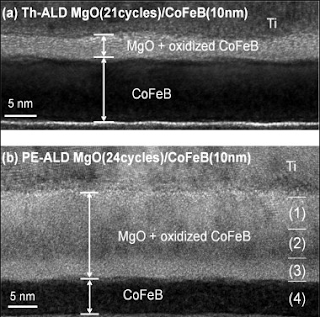[NASA Nwes, LINK] Large telescopes that could be used for detecting and analyzing
Earth-like planets in orbit around other stars or for peering back in
time to observe the very early universe may not necessarily have to be
built and assembled on the ground. In the future, NASA could construct
them in space.
A NASA engineer was selected for a flight opportunity to show that an
advanced thin-film manufacturing technique called atomic layer
deposition, or ALD, could apply wavelength-specific reflective coatings
onto a sample in space — one of the first steps in ultimately realizing
the vision of constructing and assembling large telescopes in
microgravity.
“We technologists think next-generation telescopes larger than 20
meters in diameter will be built and assembled in orbit,” said Vivek
Dwivedi, an engineer at NASA’s Goddard Space Flight Center in Greenbelt,
Maryland, and an expert in ALD technology. “Instead of manufacturing
the mirrors on the ground, why not print them in space? But you don’t
have a telescope mirror unless you coat it with a highly reflective
material. Our idea is to show that we could coat an optic in space using
this technique, which we’ve used on the ground and understand the
processes,” Dwivedi said.
He and his collaborator, University of Maryland professor Raymond
Adomaitis, will now have a chance to demonstrate the concept in space
for the first time.
Blue Origin Suborbital Flight Test
Recently, NASA’s Space Technology Mission Directorate’s Flight Opportunities program
selected Dwivedi and Adomaitis to fly a football-sized ALD chamber
aboard a Blue Origin New Shepard rocket. The launch will provide three
minutes of microgravity, long enough for the automated payload to apply a
thin film of a well-known ALD material, alumina, onto a two-inch
silicon wafer. “Alumina is a bread-and-butter material in ALD
applications,” Dwivedi said. “It’s been extensively researched.”
Commonly used by industry, ALD involves placing a substrate or sample
inside an oven-like reactor chamber and pulsing different types of
gases to create a smooth, highly uniform film whose layers are no
thicker than a single atom.
ALD-coated Samples in Space
ALD may also have applications for dust mitigation, another challenge NASA is working to solve. Currently, ALD-coated samples are being exposed to plasma from an experiment pallet aboard the International Space Station.
Dwivedi and Goddard technologist Mark Hasegawa created these samples to
test whether indium tin oxide — an effective compound for dissipating
electrical charges — might be applied to paints and other materials to
prevent lunar dust from adhering to rovers, instruments, and spacesuits.
Mitigating the dust problem is considered one of NASA’s thorniest
challenges as the agency plans to establish a sustainable presence on
the Moon under the Artemis program.
If scientists scaled a silicon wafer to the size of
the Washington metropolitan area and placed it inside an atomic layer
deposition chamber, they could apply a layer of material that varied no
more than 60 microns in thickness, as shown in this illustration.
Credits: NASA
For in-space manufacturing, ALD offers a distinct advantage, Dwivedi
said. ALD chambers scale to any size and can consistently apply smooth
layers over very large areas. “If we scaled a silicon wafer to the size
of the Washington metropolitan area and placed it inside an ALD chamber,
for example, we could deposit a layer of material that varied no more
than 60 microns in thickness,” Dwivedi said, illustrating the
technique’s precision, which would be essential for developing sensitive
optics.
Although Dwivedi and Adomaitis have built several ALD chambers using
Goddard Internal Research and Development program funding, they’ve
decided to fly a chamber made of commercial off-the-shelf parts during
the suborbital test flight.
Dwivedi said he and Adomaitis conceived the idea about two years ago.
A Goddard colleague, Franklin Robinson, secured a test via Flight
Opportunities also on a Blue Origin New Shepard rocket and proved a groundbreaking technology for effectively cooling tightly packed instrument electronics.
“We worked very hard to get this opportunity,” Dwivedi said. We can’t
wait to get the payload launched to see how well this technique works
in space.”
About Flight Opportunities
The Space Technology Mission Directorate’s Flight Opportunities program is managed at NASA's Armstrong Flight Research Center in Edwards, California. NASA's Ames Research Center in
California's Silicon Valley manages the solicitation and evaluation of
technologies to be tested and demonstrated on commercial flight
vehicles.
For more information about Goddard technology, go to: https://www.nasa.gov/sites/default/files/atoms/files/spring_2020_final_web_version_0.pdf



%20(1).png)













